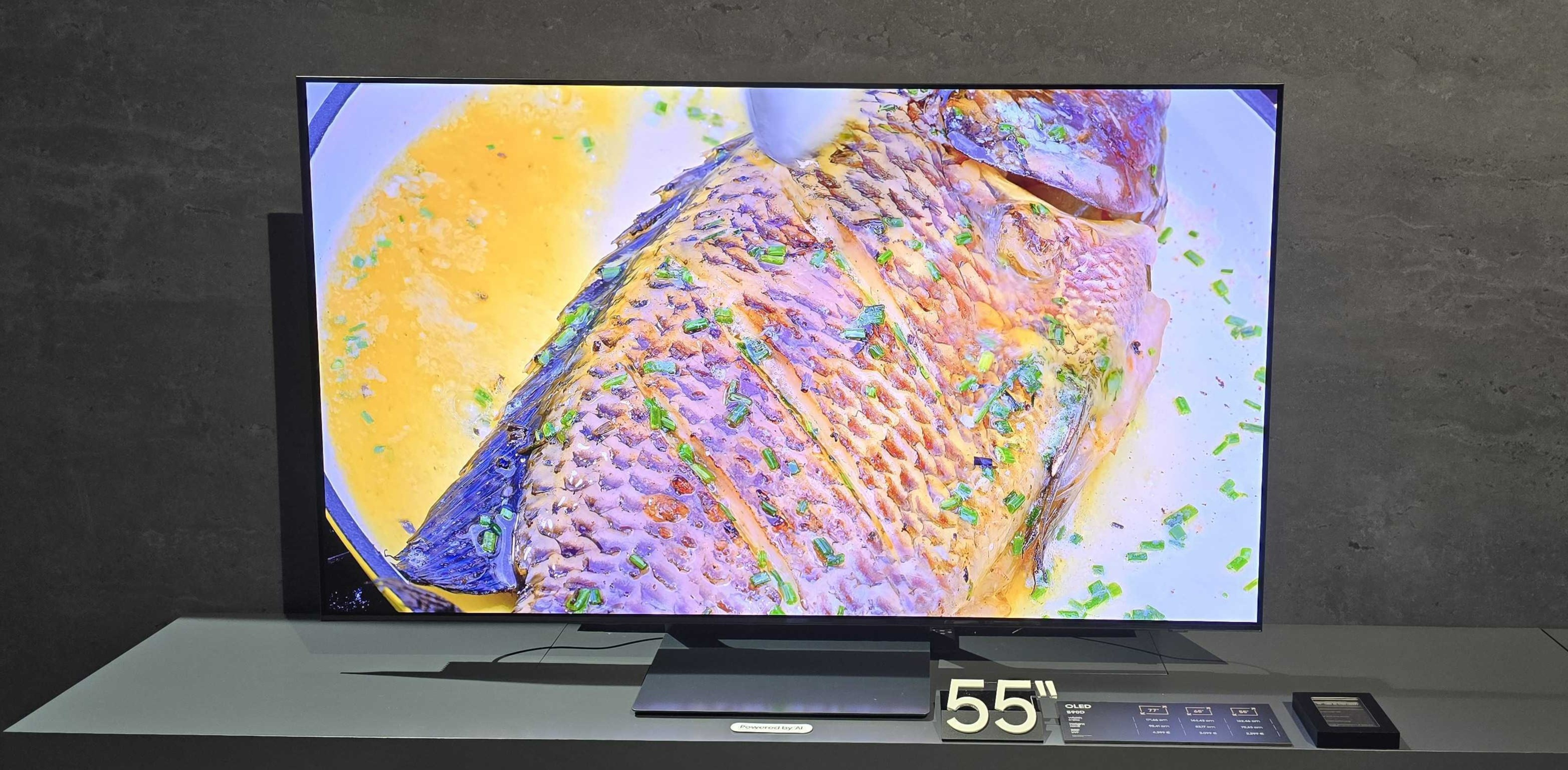Samsung refuses to deny OLED 'panel lottery' reports
Confusion reigns with Samsung's rumoured 'one TV, two panels' approach

Samsung has caused quite a stir with its 2024 OLED TV lineup thanks to what many are calling an 'OLED panel lottery'. The Korean technology giant is rumoured to be taking an unconventional route with the release of the upcoming S90D by mixing OLED panel technology, and it could spell trouble for buyers.
So what is this so-called OLED panel lottery? It refers to how Samsung will reportedly be using a mixture of QD-OLED and standard WOLED panels (the W standing for WRGB due to the use of a white sub-pixel) on TVs with the same model number – perhaps without even flagging which panel is contained within each specific sample.
Samsung's approach to its OLED lineup has been odd from the very beginning, with the company choosing to brand its models as simply 'OLED', omitting the 'QD-' prefix that would flag them as different and potentially better than the standard OLED TVs that had been available up to that point. It now seems, though, that that might have been the start of a concerted effort to blur the lines between OLED and QD-OLED models.
Last year, Samsung launched its first 'standard' OLED TV that used a panel sourced from LG Display. There was some consternation at the time, as this WOLED TV was the 83-inch version of the S90C, which in all other sizes featured a QD-OLED panel.
At least in that case, the well-informed consumer could buy knowing the panel they would be getting, but that might not be the case for much longer.
According to a report in The Elec, the Samsung S90D will come in both QD-OLED and WOLED versions, potentially with no identifiable way of telling which one you're buying. While it is believed that the 42-, 48- and 83-inch versions will only come with WOLED panels – as Samsung Display only manufactures QD-OLED TV displays in 55-, 65- and 77-inches – the notion that the remaining sizes could be issued at random with differing panel technology has set alarm bells ringing.
Why would this be an issue? QD-OLED has proven to be a more advanced OLED technology, touting vibrant, punchy colours and superior brightness as its key defining features. Therefore, if Samsung took this approach there would likely be large performance disparities between two versions of the 'same' TV.
Get the What Hi-Fi? Newsletter
The latest hi-fi, home cinema and tech news, reviews, buying advice and deals, direct to your inbox.
We contacted Samsung to ask whether these reports are accurate and, if they are, whether each region will get a single version of the S90D and whether the panel type used in a specific TV will be identifiable in some form via the model number (a 'Q' suffix for the QD-OLED version, perhaps). Samsung gave What Hi-Fi? the following statement: "We’re continually evolving our TV portfolio to provide our customers with new and exciting innovations and experiences. Samsung OLED TVs consistently offer a premium experience while delivering excellent viewing performance, regardless of the specific panels that are integrated into the product". Which unfortunately leaves us none the wiser on the question of the panels.
If you ask us, Samsung doesn't seem to think this is a big deal. We beg to differ – and we think potential buyers will, too.
More on this story as we get it.
MORE:
Read our Samsung S95D hands-on review
As well as our picks for the best OLED TVs
As well as the best OLED TV deals
Lewis Empson is a Senior Staff Writer on What Hi-Fi?. He was previously Gaming and Digital editor for Cardiff University's 'Quench Magazine', Lewis graduated in 2021 and has since worked on a selection of lifestyle magazines and regional newspapers. Outside of work, he enjoys gaming, gigs and regular cinema trips.
-
Friesiansam I wouldn't want Samsung to just “deny", they need to clarify exactly what you will get, if you buy. As things are, if I was in the market for a large, high-end TV, I would not be buying a Samsung OLED.Reply -
Azzuro Very sneaky and there should be legislation requiring certain disclosures. The panel type is a fundamental spec that needs to be disclosed. A spec sheet is otherwise completely useless.Reply
They know if they price the S90C at the same level as an LGC3 with the same panel nobody would touch the Samsung given the lack of Dolby Vision and inferior upscaling and picture accuracy. The only reason you would consider it would be with the better hardware the QD-OLED panel offers.
